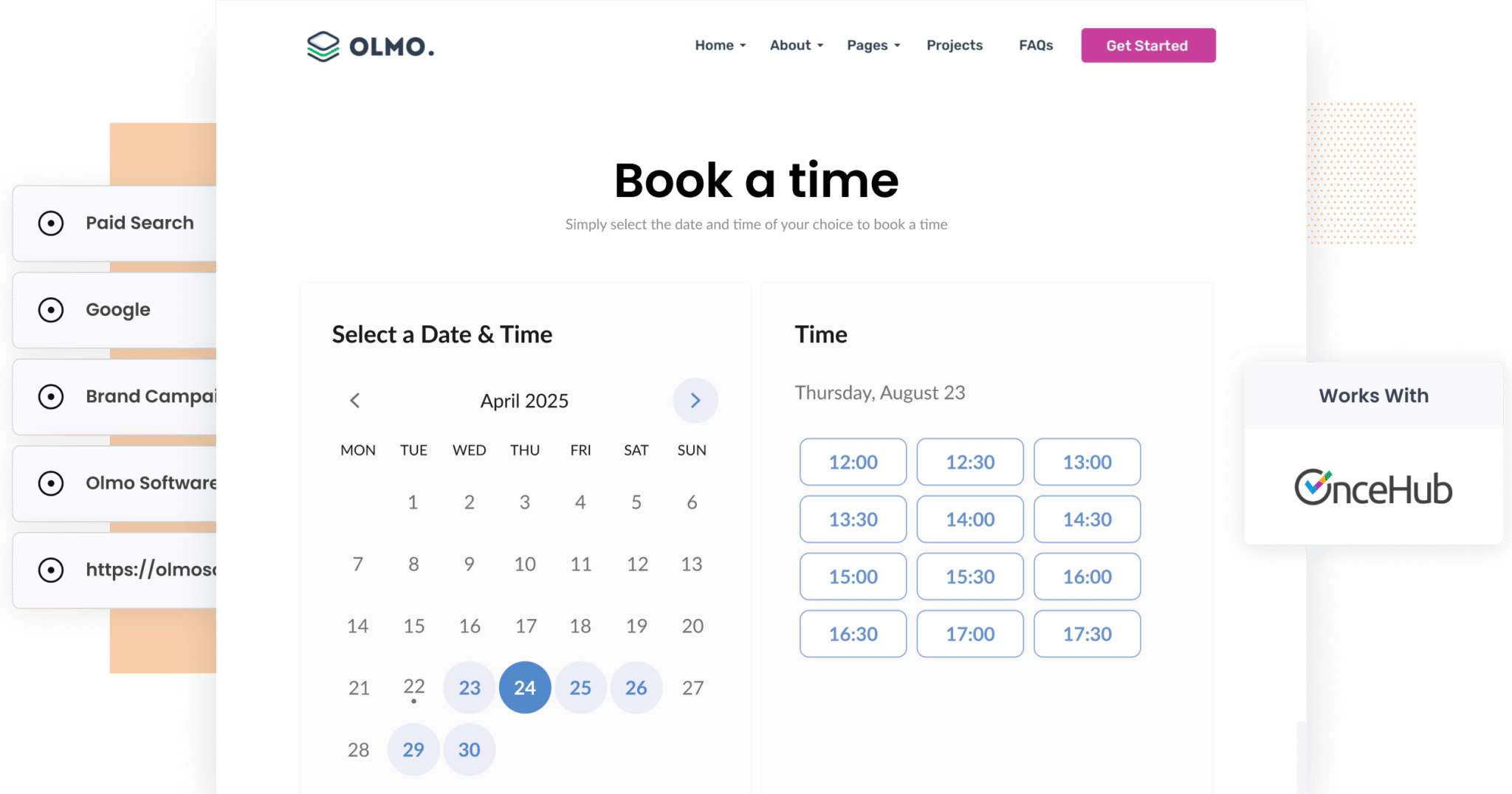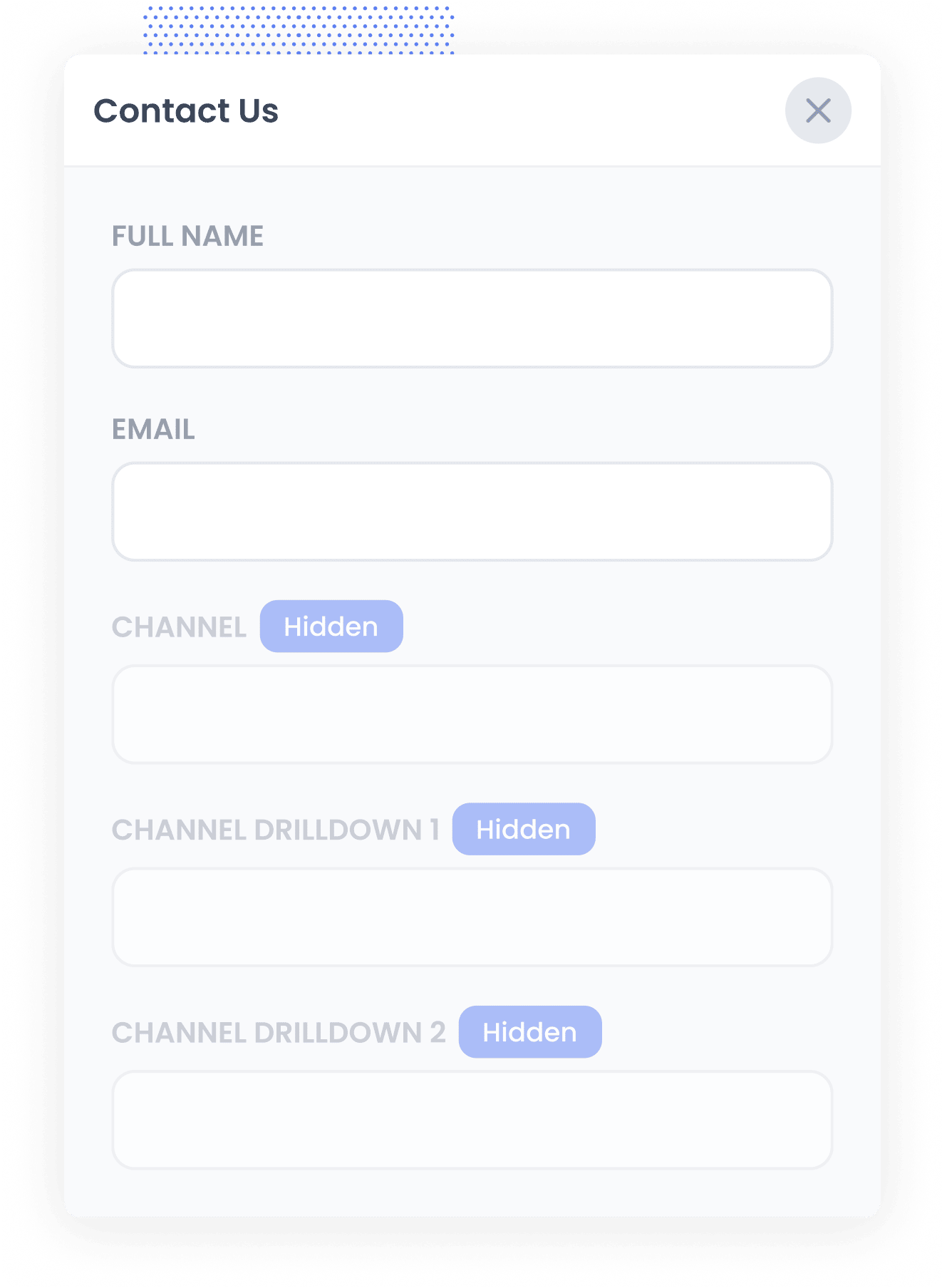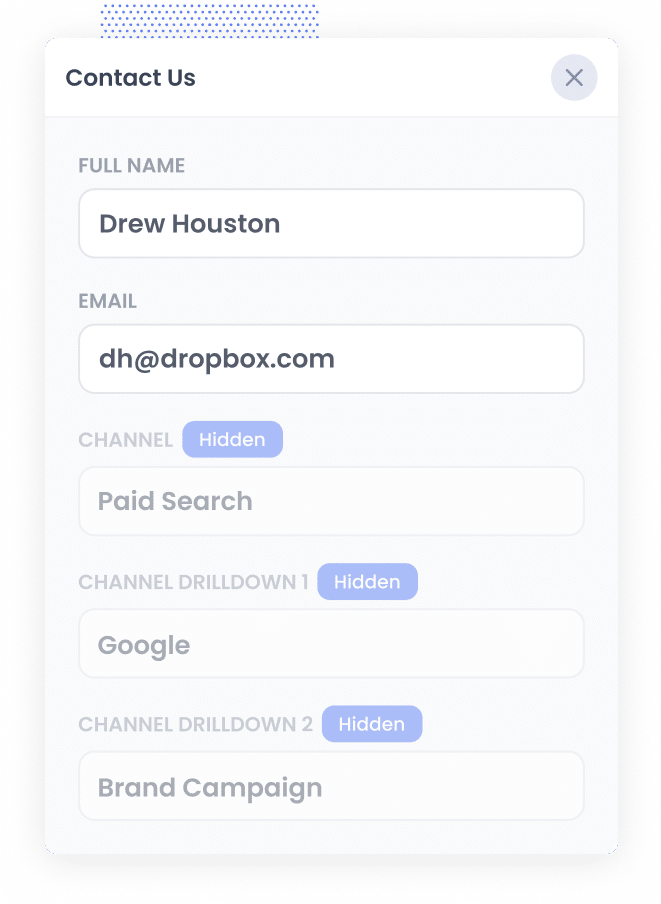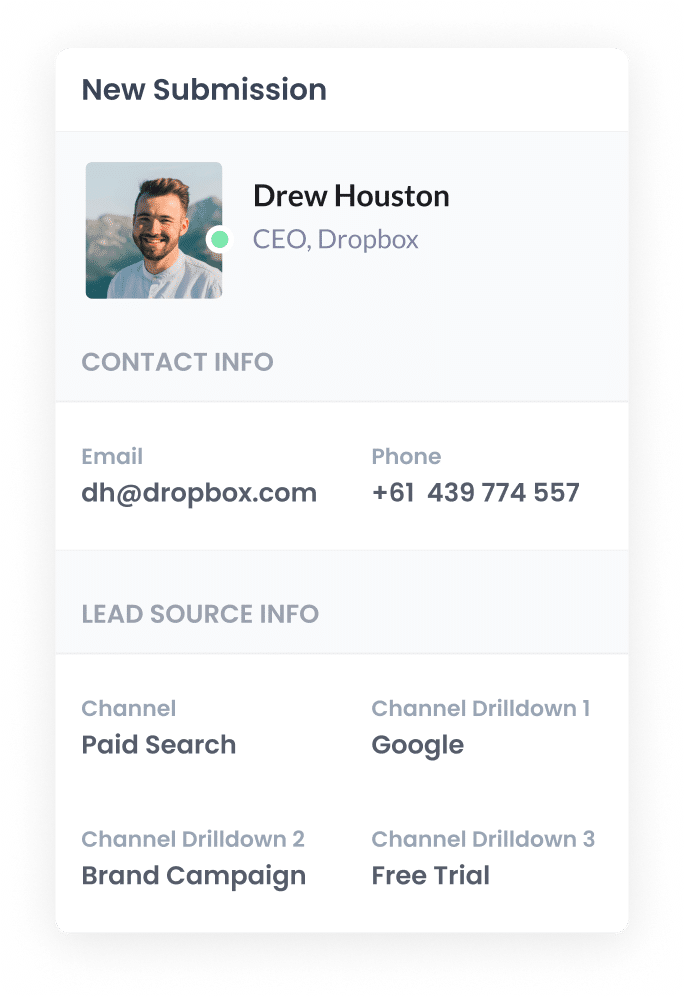How to track the source of leads & bookings in OnceHub
Learn how to track the source of your leads & bookings in OnceHub, so you know which of your marketing activities are working and which aren't.

Ever wondered which of your marketing efforts are actually bringing in meeting bookings, leads, and customers for your business?
It’s a common challenge. Platforms like Google Analytics can give you visibility into how many people are visiting your site and where they came from, but they fall short when it comes to showing how many of those visitors actually booked a meeting or became a customer.
Luckily, there’s a better way.
In this article, we’ll walk you through how to use a tool called Attributer to capture the source of every OnceHub booking, whether that’s Paid Search, Paid Social, Organic Search, Organic Social, or another channel entirely.
3 simple steps to track the source of leads in OnceHub
Attributer makes it easy to track the source of your leads/bookings in OnceHub. Let’s take a look at the three simple steps you’ll need to follow:
1. Install Attributer and configure your OnceHub widgets

The first step is to sign up for a free 14-day Attributer trial. Once you’ve done that, you’ll receive a small snippet of code that needs to be added to your website (step-by-step instructions are available for all major website builders here).
Next, you’ll need to configure your embedded OnceHub booking form to work with Attributer. All you have to do is paste your OnceHub URL into our embed code generator. It will generate a modified version of the standard OnceHub embed code with a few extra lines added to capture and pass through attribution data. Place that code on your site wherever you want your booking form to appear.
2. Attributer writes the lead source data into the hidden fields

Now that everything is in place, Attributer will begin working behind the scenes every time a user lands on your site. It analyses a range of technical details about their visit, similar to what tools like Google Analytics do, to figure out where the visitor came from.
It then categorises the visitor into a marketing channel (like Paid Search, Organic Search, Paid Social, Referral, etc.) and stores this data in their browser.
Later, when the user completes a OnceHub booking widget on your site, Attributer passes through that channel information with the booking, so you know exactly how they found you.
3. Lead source data is captured in OnceHub

Finally, once the data is inside OnceHub, you can put it to work in different ways:
- View it directly in OnceHub: See the attribution data alongside each scheduled event within your OnceHub dashboard.
- Send it to your CRM: Push the data into platforms like Salesforce, Pipedrive, Hubspot and others. From there, you can use your CRM’s built-in reporting tools to create dashboards and reports that show where your bookings, leads, and customers are coming from.
- Export to a spreadsheet: Sync the data to Google Sheets or Microsoft Excel. This gives you a clean table view of all your lead source information. You can also connect your spreadsheet to tools like Google Data Studio or Microsoft Power BI to build more detailed reporting dashboards.
What data gets captured in OnceHub?
Let’s say I’m on the marketing team at BrightPath Accounting, a firm offering specialised services for small businesses. We’re running Google Ads promoting our “End-of-Financial-Year Tax Planning” service to sole traders and small companies.
A potential client clicks the ad and books a consultation through the OnceHub booking widget embedded on our website.
With Attributer installed and UTM parameters set, the following data would be passed through and captured with the booking:
- Channel: Paid Search
- Channel Drilldown 1: Google
- Channel Drilldown 2: EOFY Tax Campaign
- Channel Drilldown 3: tax planning for small business
But if someone finds searches for something on Google and lands on one of our blog posts, then Attributer would capture:
- Channel: Organic Search
- Channel Drilldown 1: Google
- Channel Drilldown 2: www.google.com
- Channel Drilldown 3: small business tax tips
This kind of data helps us not only track bookings, but also understand exactly where our highest-value leads are coming from.
3 example reports you can run when you track the source of your leads in OnceHub
If you use Attributer to capture attribution data on your leads and send that data to your CRM or reporting tool of choice, you’ll be able to build clear, insightful reports that show exactly which marketing efforts are driving real results.
Throughout my 15+ years in marketing, I’ve overseen millions in ad spend and created more performance dashboards than I can count.
Below are three of my go-to reports that have helped shape smarter marketing decisions, each one easy to replicate when you have accurate attribution data:
1. Leads by channel

This report shows the number of leads or bookings you're generating each month, broken down by channel, like Paid Search, Paid Social, Organic Search, Referral and more.
It gives you a high-level view of what’s actually driving leads, so you can focus your budget and resources where they’ll have the biggest impact.
For instance, if Organic Search is consistently delivering the majority of your leads, then it might be worth investing heavier in SEO.
2. Leads by Google Ads campaign

This chart offers a detailed breakdown of how many leads or bookings you’ve acquired each month from your Google Ads, segmented by the specific campaigns they ocame from.
It’s a valuable way to identify which campaigns are truly delivering results, beyond just impressions and clicks. With this insight, you can confidently scale up the high-performing campaigns and adjust or pause the ones that aren’t converting effectively.
3. Leads by social network

Are you posting content on a range of social media sites (e.g. Twitter, Facebook, LinkedIn)? If so, this report helps you assess the performance of each one.
With these insights, you can decide where to allocate more of your resources (e.g. time, money, etc.).
As an example, the chart above shows that you're getting more leads from your efforts on Twitter (now X) than LinkedIn and Facebook. As a result, you might want to direct more of your time and energy towards posting on Twitter.
Wrap up
If you're looking for a better way to track exactly where your leads and customers are coming from, Attributer might be just what you need.
It works by capturing attribution data and passing it through with every submission of your OnceHub booking form. And when this data is sent to your CRM or analytics tools, you can run reports that show which channels, campaigns, ads, or keywords are generating real results.
The best part? Attributer is free to try and takes less than 10 minutes to get started. Sign up today for your 14-day trial and start uncovering what’s really driving your growth.
Get Started For Free
Start your 14-day free trial of Attributer today!

About the Author
Aaron Beashel is the founder of Attributer and has over 15 years of experience in marketing & analytics. He is a recognized expert in the subject and has written articles for leading websites such as Hubspot, Zapier, Search Engine Journal, Buffer, Unbounce & more. Learn more about Aaron here.
